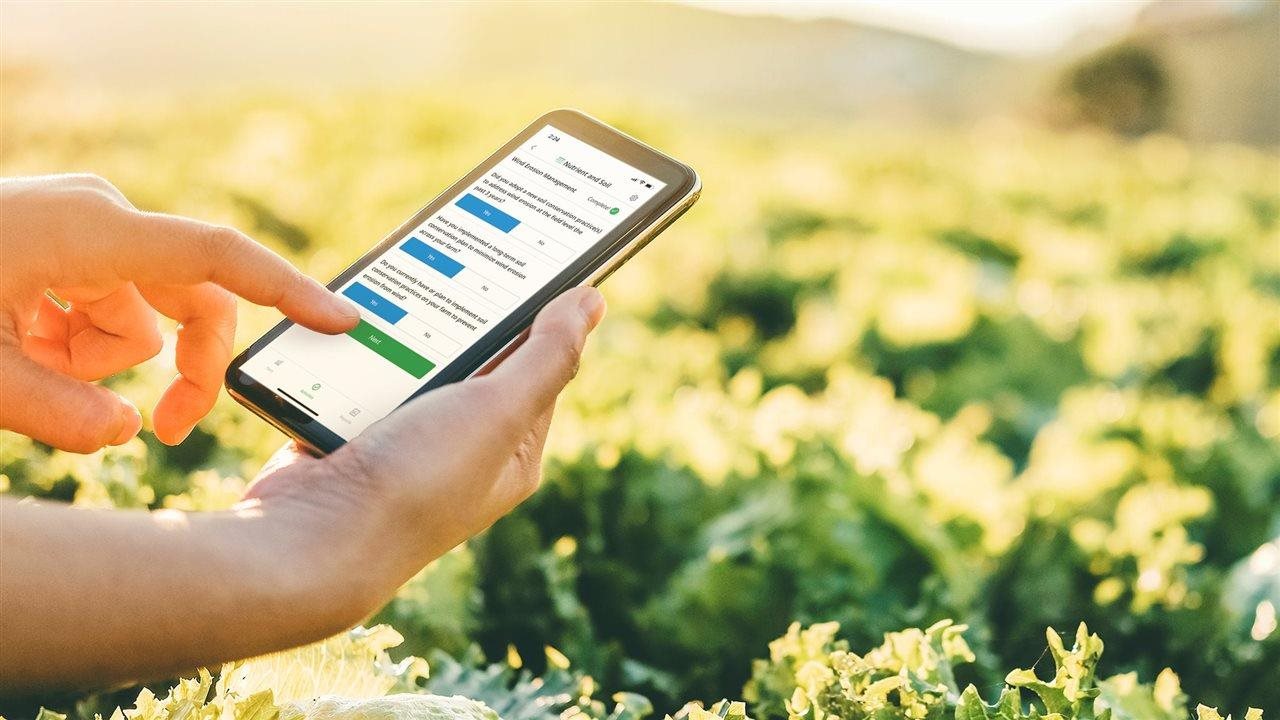
(BPT) – Farmers have always been dedicated stewards of the land and invested in the sustainability of their operations. However, they haven’t always successfully shared these stories with the public. With the advancement of technology — and the demand for transparency — this narrative is changing. More tools have become available for farmers at the tips of their fingers to discover and share their sustainability story.
In an increasingly digital world, consumers expect increased company access and transparency. It’s no different when it comes to the food they purchase. People are more eager than ever to understand the ingredients in their food, how those ingredients were cultivated, and the environmental impact of it all. These questions can be answered by those at the forefront of food production.
The consumer’s quest for knowledge seeps through the agriculture supply chain, trickling down to growers whose crops are processed into grocery store offerings. How can the agriculture industry understand and share its sustainability story? Data, both quantitative and qualitative, plays an important role.
All about the data
Agricultural sustainability encompasses environmental, financial and social sustainability. No matter which facets you examine, understanding sustainability at the farm level begins with gathering data points to set a baseline.
“Data tracking on a farm is similar to maintaining a household budget,” said Jeff Lail, senior data analyst at Syngenta. “It’s easier to save money when you’re keeping track of what you’re spending. Similarly, having a good understanding of where your farm resources go will help you manage those resources better.”
Daniel Olson, a sugarbeet, pinto bean and wheat farmer from North Dakota, agrees.
“You have to take inventory of where you’re at to establish if you’re headed in a positive or negative direction,” Olson says. “This baseline will also help you determine down the road if the practices you think are helping you actually are.”
While setting a baseline is a crucial first step in calculating sustainability, farmers will benefit from the change that comes from that measurement. To help growers achieve both measurement and change, Syngenta created the Cropwise™ Sustainability app.
One size doesn’t fit all
The Cropwise Sustainability app begins with a quick self-assessment called the Sustainable Outcomes in Agriculture (SOA) standard. It gathers qualitative and quantitative information in six key areas: crop production, water impact, soil health, biodiversity and habitat, human and animal well-being and community leadership.
After completing the assessment, a digital dashboard populates with sustainability scores in each area, recommendations for improvement and the opportunity to see how scores compare to other app users in a specified geography.
It can be challenging for growers to measure and track sustainability, let alone figure out what to do with the data. The app’s ultimate goal is to make it easier for a grower to identify where they can improve and offer suggestions that won’t require a farm operations overhaul.
Olson completed the SOA standard and appreciated that the assessment considered various sustainability practices and offered geographical insights.
“There is no ‘one size fits all’ approach to sustainability,” said Olsen. “How I manage sustainability in North Dakota will be very different from someone in another geography.”
As helpful as this app is at the farm level, its impact extends deep into the agriculture supply chain.
Building bridges between growers and consumers
Beyond learning how they can measure and improve sustainability on their farms, the data collected by the app will allow growers to tell a unique sustainability story to their customers.
Take United Sugars, for example. Syngenta partnered with the sugar supplier to help bridge the gap between growers and consumer packaged goods companies. Olson and a group of sugarbeet farmers in Minnesota’s Red River Valley took the self-assessment and were given sustainability insights and actionable recommendations. In return, United Sugars provided the anonymized data to their customers to help complete the sustainability picture for the foods they produce.
In the end, it was a mutually beneficial arrangement that allowed Syngenta to collect meaningful data from growers and, in turn, provide them with valuable sustainability insights.
“We are a grower-centric company that is also committed to regenerative agriculture,” said Trent Wimmer, key account sustainable solutions lead at Syngenta. “Helping growers understand and share their sustainability story is a way that we add value to growers beyond just yield.”
Donna Isakson, sales and marketing manager at United Sugars, values the partnership with Syngenta.
“The goal of our partnership is to be more transparent with our customers and show them what we are doing from a sustainability perspective,” Isakson said. “I value what they’ve provided in calculating sustainability efforts.”
